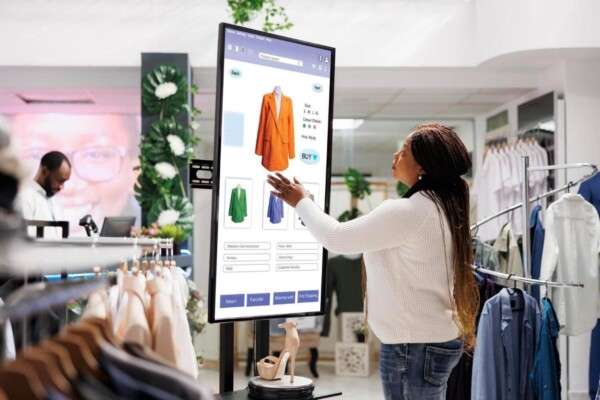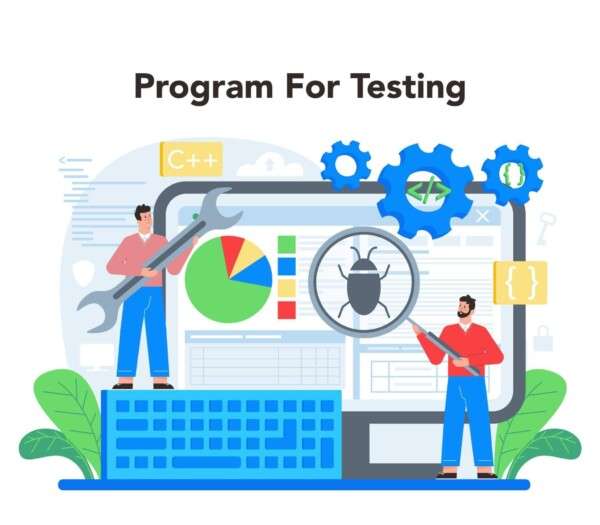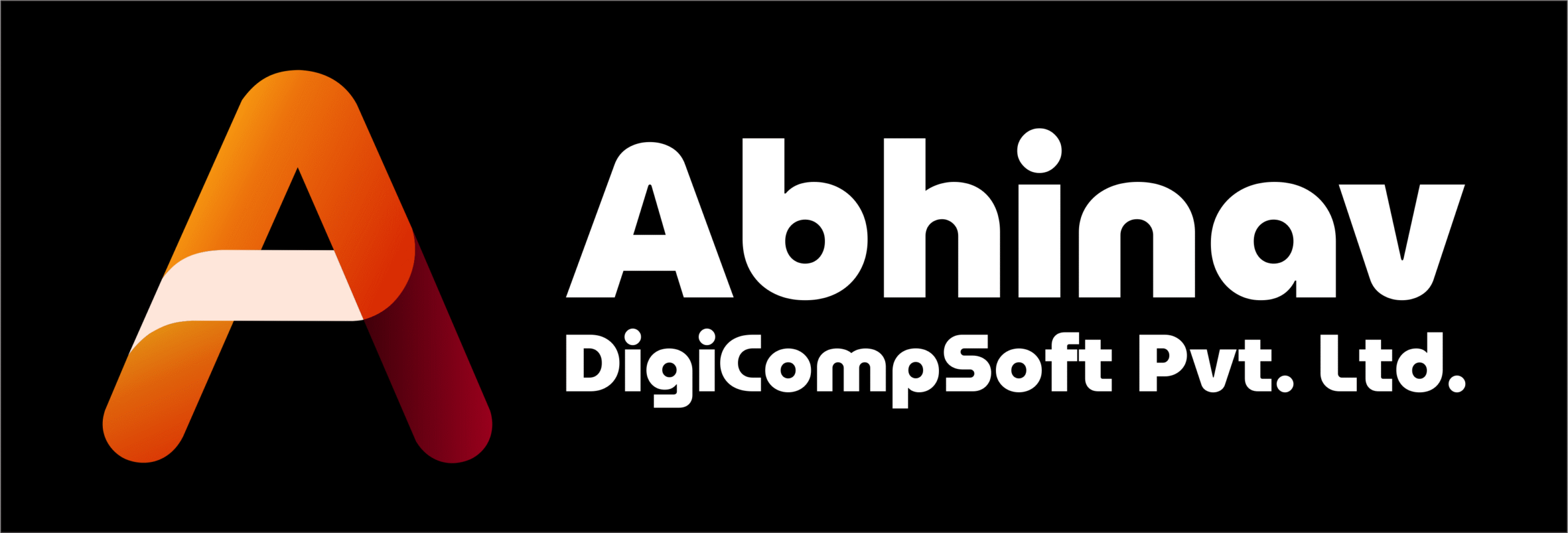summary
Custom IT solutions for seamless signage production encompass a range of technologies and methodologies that enhance the efficiency and effectiveness of signage projects from initial concept to final execution. These solutions are crucial for businesses seeking to create visually compelling and functional signage that aligns with their branding and communication goals. The integration of tailored software, stakeholder management strategies, and innovative design techniques not only facilitates streamlined workflows but also ensures compliance with industry standards and client expectations.
The significance of custom IT solutions in the signage industry stems from their ability to address unique project challenges, optimize collaboration among teams, and improve operational efficiency. A systematic approach, beginning with thorough stakeholder analysis and extending through design, prototyping, and testing, allows for the active engagement of all relevant parties, ensuring that diverse perspectives are integrated into the project lifecycle.. Notable advancements, such as the transition from traditional manufacturing to digital technologies and the incorporation of artificial intelligence, have further transformed the landscape, offering businesses innovative ways to engage customers and enhance visual communication.. Despite these advancements, the implementation of custom IT solutions in signage production is not without its challenges. Issues such as budget overruns, scope changes, and the need for effective change management can hinder project success. Furthermore, ensuring hardware compatibility and maintaining ongoing support are critical factors that organizations must navigate to achieve their desired outcomes.
As the industry evolves, the necessity for sustainable practices and adaptive technologies will increasingly shape the strategies employed by businesses seeking to remain competitive in a dynamic marketplace. Overall, the successful integration of custom IT solutions in signage production not only fosters improved customer engagement through innovative displays but also drives operational efficiencies, ultimately positioning businesses for long-term success in an increasingly digital world.
Overview
Custom IT solutions play a pivotal role in the seamless production of signage, enabling businesses to effectively manage projects from concept to completion. The process begins with a thorough stakeholder analysis, where teams assess the influence and interest of various stakeholders to prioritize their engagement and allocate resources appropriately. This systematic approach ensures that critical voices are heard, fostering collaboration and driving the project’s success. During the design phase, quality is paramount; it is essential to align the final product with the customer’s vision, incorporating rigorous checks against specifications at every step. The integration of custom software solutions facilitates communication and collaboration across departments, streamlining decision-making processes and enhancing operational efficiency. This approach allows organizations to address unique business challenges, ensuring compliance with industry standards while adapting to evolving requirements. Prototyping plays a significant role in the development of signage projects, allowing for exploration of materials and design details that meet the specific needs of clients. Rapid iterations and mockups can help refine concepts before final production. Additionally, proof of concept initiatives enable teams to test solutions in real-world environments, adjusting them based on feedback to enhance customer experience and operational performance.
History

Early Days: Handcrafted Manufacturing & Basic Machinery
The signage industry has undergone significant transformations over the past four decades. In its early days, signage production heavily relied on manual labor and basic machinery, with craftsmen hand-painting signs. While this artisanal approach had its charm, it was often time-consuming, labor-intensive, and resulted in inconsistencies. The production of signage was a slow process, frequently taking days or even weeks to complete a single project, constrained by a limited availability of fonts, colors, and materials
The Advent of Computer-Aided Design (CAD)
A pivotal moment in the history of signage manufacturing occurred with the introduction of Computer-Aided Design (CAD) in the 1980s. This technological advancement marked a turning point, allowing designers to create detailed and precise digital models of signs. CAD software facilitated easy modifications and scaling of designs, significantly reducing the time required to produce signage. This innovation opened up new realms of creativity and customization, transforming the industry into a more dynamic sector capable of producing stunning, tailored signs at scale
Recent Innovations and Industry Trends
The past few years have seen the signage industry further evolve through the integration of digital signage technologies and innovative design strategies. High-profile projects, such as the digital transformation at Rivers Casino, have highlighted the growing importance of strategic partnerships and advanced technologies in the signage landscape. This project featured extensive use of indoor and outdoor LED signage, showcasing how the industry has embraced innovation to enhance visibility and engagement. Additionally, successful projects like the Hattiesburg Heritage Monument demonstrate the impact of meticulous planning and execution, incorporating modern features like QR codes to enhance visitor interaction and media attention. As the industry continues to evolve, embracing new technologies and adapting to changing market demands will be essential for companies aiming to thrive in this competitive landscape
Key Components

Software Solutions
The choice of software is foundational to seamless signage production. Custom software development offers tailored solutions that meet specific business needs while avoiding the complexities often associated with off-the-shelf products. By automating repetitive tasks and optimizing workflows, custom solutions can enhance operational efficiency and facilitate better collaboration across departments. Furthermore, the software should be user-friendly and accessible, allowing for easy content updates from various locations
Design Collaboration
When partnering with a professional sign maker, collaboration is key to achieving an impactful sign. A team of experts will work with you to ensure that the sign’s design aligns with your intended message and functionality. Critical design elements include the layout, which should be organized clearly to convey the sign’s purpose without unnecessary clutter. Typography also plays a significant role, especially in metal signs that often incorporate embossing or engraving; thus, selecting the right font style and size is essential for legibility and visual appeal.
Stakeholder Engagement
Effective stakeholder management is crucial for the success of any signage project. Identifying key stakeholders—those with the most influence—helps guide project direction and ensure alignment with their expectations and needs. Employing online survey tools like SurveyMonkey or Google Forms can facilitate the collection of stakeholder feedback, enabling continuous improvement in engagement strategies. It is essential to address technological challenges by providing necessary training and ensuring the security of sensitive information during the engagement process.
Hardware Compatibility
Selecting compatible hardware is vital for a successful digital signage solution. CUSTOMtronics supports a range of hardware options, ensuring flexibility and integration with existing systems. Their solutions are compatible with leading commercial-grade players and media devices, which allows for a customized digital signage experience tailored to unique business needs.
Support and Training
Ongoing support is crucial for maximizing the effectiveness of digital signage solutions. Comprehensive support resources, including online training videos and personalized assistance from account representatives, ensure that organizations can leverage their signage software to its fullest potential. This support framework helps navigate the complexities of system design and implementation, allowing businesses to focus on their core objectives.
Interactivity and Engagement Tools
Incorporating interactivity into signage can enhance user engagement. Features like built-in touchscreen functionality and QR codes allow end-users to access information more conveniently[20]. Automatic language translations can further broaden the reach of digital signage, making it accessible to diverse audiences. These elements collectively contribute to a more dynamic and effective signage experience.
Process

The process of developing custom IT solutions for seamless signage production involves several critical stages designed to ensure clarity, efficiency, and client satisfaction. Each phase contributes to a structured workflow that minimizes risks and maximizes the potential for successful project outcomes.
Request Intake
The initial step in the process is the request intake, which serves as the first point of contact with the client. Here, communication is established to understand the client’s needs and the overall project scope. Upon receiving a lead, it is assigned to a team member specializing in the type of project required, ensuring that the client feels confident in the management of their project
Ideation and Information Gathering
Following the request intake, detailed discussions with the client are conducted to gather information about their vision. This phase includes practical considerations such as permitting and shipping logistics. A comprehensive client brief is developed that outlines objectives, brand guidelines, target audience, and desired outcomes
Prioritization
Once the project is underway, it is essential to establish a hard install date. This specific timeline allows for effective prioritization of tasks alongside other projects. Understanding any critical deadlines, such as significant events or openings, is crucial to prevent last-minute scrambles.
Approval Process
Advancements in technology have streamlined the workflow, particularly in obtaining client approvals. Installers utilize a field service program that allows clients to sign off on completed projects instantly, which subsequently triggers the billing process and prompts a request for client feedback.
Testing and Deployment
Testing is a vital part of the process to ensure that the signage solutions function correctly and are visually appealing. The team assists with the installation of the signage once testing is completed, providing comprehensive project documentation that details necessary management points. Additionally, training sessions are conducted to familiarize staff with the system, ensuring effective use of the signage tools.
Communication Planning
A robust communication plan is developed at the outset to outline how stakeholders will be informed throughout the project. This plan includes regular updates, status reports, and meeting schedules to build confidence among stakeholders regarding project progress
Stakeholder Engagement
Effective stakeholder engagement is achieved through structured methods such as stakeholder identification workshops and early requirement gathering sessions. These strategies facilitate a clear understanding of stakeholder needs and expectations, thus reducing the risk of scope creep later in the project.
Benefits

Digital signage solutions offer a multitude of advantages that significantly enhance both customer engagement and operational efficiency. One of the primary benefits is the ability to capture attention through captivating visual displays. By utilizing vibrant screens and dynamic content, businesses can effectively communicate messages, promotions, and announcements, ensuring they are not only seen but remembered by the audience
Enhanced Customer Engagement
Digital signage provides an interactive experience that can significantly improve customer engagement. It offers personalized content that can be tailored to various customer segments, ensuring a consistent brand experience across both physical and digital channels. The use of multimedia elements, such as images, videos, and animations, allows businesses to create visually appealing displays that can showcase products or entertain customers while they wait. Additionally, incorporating interactive features like touch functionality or smartphone integration through Bluetooth or RFID adds significant value to customer interaction
Real-Time Communication
The ability to provide real-time updates is another crucial benefit of digital signage, particularly in fast-paced environments like restaurants and retail. Digital signage allows for quick changes to menus, promotions, and other content, ensuring customers always have access to the most current information. This capability streamlines operations by reducing the workload on staff who would otherwise need to manage manual updates. Moreover, digital signage enhances operational efficiency by enabling managers to communicate important safety instructions and operational updates visibly, fostering a safer and more informed workplace
Cost Efficiency and ROI
Investing in digital signage can lead to a significant return on investment. By attracting impulse shoppers and improving customer satisfaction, businesses can drive increased sales and encourage repeat business. Furthermore, digital signage can save costs by entertaining customers in queues, minimizing perceived wait times and reducing the risk of lost sales. The flexibility of digital signage allows businesses to cycle through various promotional messages, effectively maximizing the impact of each display without overwhelming the viewer with information
Strategic Marketing Opportunities
Digital signage also opens new avenues for strategic marketing, such as the implementation of combo packages and offers that give the impression of savings. This approach can motivate customers to increase their spending beyond their initial intentions, ultimately enhancing overall sales performance. Highlighting extra perks, discounts, and rewards through digital displays can further entice customers and promote a more engaging shopping experience
Challenges

Managing custom IT solutions for seamless signage production involves navigating a variety of project management challenges that can impact project success. These challenges encompass budget overruns, team collaboration, scope changes, and the integration of technology and tools
Budget Overruns
One of the most prevalent issues in project management is budget overruns, which occur when project expenses exceed the initial estimates, potentially leading to financial strain and project failure. Factors such as unforeseen circumstances, scope changes, and inaccurate estimates contribute to this challenge. To mitigate budget overruns, project managers should implement thorough cost estimation at the project’s inception, reserve emergency funds for unexpected expenses, and schedule regular budget review meetings to monitor financial progress. Additionally, exploring cost-saving alternatives, such as outsourcing specific tasks or negotiating better deals with vendors, can help manage budget constraints
Team Collaboration
Effective team collaboration is crucial for project success, especially in complex IT environments. Frequent changes in project scope, requirements, and tasks can overwhelm team members, leading to incomplete tasks and extended sprints. To enhance collaboration, it is important to foster a culture of open communication and utilize collaboration tools like Stormboard. Regular check-ins and a well-defined stakeholder engagement plan using tools such as the RACI chart can ensure all team members are informed and accountable, minimizing the impact of scope changes
Change Management and Adaptability
The dynamic nature of IT projects often necessitates a robust change management strategy. As project concepts and requirements evolve, it is essential to review changes with key stakeholders and assess their impact on the project timeline and deliverables[8]. This approach allows project managers to prioritize tasks effectively and communicate new expectations clearly. Additionally, learning from past projects during retrospective meetings can provide valuable insights for managing changes and forecasting budget impacts in future projects
Technology and Tools Integration
Successful project management also relies on the seamless integration of technology and tools within the existing tech stack. Without appropriate integrations, project progress may slow down due to repetitive tasks and the need for employees to switch between multiple applications, which can hinder productivity[32]. To address this challenge, project managers should carefully evaluate the integration capabilities of new tools before adoption, ensuring they enhance rather than disrupt workflows
Best Practices
Effective stakeholder management is essential for ensuring the success of custom IT solutions in seamless signage production. By implementing best practices, project managers can enhance communication, foster collaboration, and navigate challenges more effectively throughout the project lifecycle.
Effective Communication Strategies
Effective communication is the cornerstone of successful stakeholder engagement.
Developing a Comprehensive Communication Plan: Outline communication objectives, target audiences, preferred channels, and frequency of updates. This plan should address how information will be disseminated to stakeholders, ensuring clarity and transparency throughout the project Tailoring Communication: Adapt your communication style and content to suit different stakeholders, such as technical teams and senior management. This ensures that the information resonates with the intended audience and meets their specific needs Establishing Regular Check-Ins: Schedule recurring meetings, such as daily stand-ups or one-on-ones, to align priorities, address any issues, and maintain engagement with stakeholders. Consistent communication helps build trust and keeps everyone informed about project developments Using Appropriate Communication Tools: Leverage project management software and collaboration platforms to streamline information sharing and enhance communication among team members and stakeholders.
Stakeholder Identification and Analysis
Identifying and analyzing stakeholders early in the project is critical for effective engagement.
Creating a Stakeholder Register: Document all potential stakeholders, categorizing them based on their influence and interest in the project. This helps project managers understand who to prioritize and how to tailor communication strategies effectively.
Understanding Stakeholder Needs: Conduct interviews and surveys to gather detailed information about stakeholders’ requirements, expectations, and concerns. This knowledge allows for the development of a stakeholder engagement plan that addresses their needs appropriately[35][36].
Engaging Stakeholders Throughout the Project Lifecycle
![]()
Consistency Across Multiple Locations
A structured approach to stakeholder engagement can significantly enhance project outcomes.
Defining Objectives for Engagement: Clearly outline the goals of stakeholder engagement, which may include gaining support, minimizing opposition, and gathering input. Establishing these objectives helps guide communication strategies and engagement activities.
Utilizing the Power-Interest Matrix: This tool allows project managers to categorize stakeholders based on their level of influence and interest. By tailoring engagement strategies accordingly, managers can ensure that key stakeholders receive the attention and information necessary for project success.
Providing Regular Updates: Establish a schedule for updates to keep stakeholders informed of project progress and changes. Regular communication fosters trust and keeps stakeholders engaged throughout the project lifecycle.
By prioritizing these best practices in stakeholder management, organizations can create a collaborative environment that supports the successful delivery of custom IT solutions for seamless signage production. Through effective communication, thorough stakeholder analysis, and proactive engagement strategies, projects are more likely to achieve their objectives and drive positive outcomes.
References
- Stakeholder Map: 6 Steps To Project Success Mastery
- Critical Stages in the Sign Manufacture Process | xsign
- Solving Complex Business Challenges: Leveraging Custom Software Development
- Design Facilitation & The IDS Process – IDS Signage Company
- Signage Design Process
- Roadmap to Digital Signage: Solutions That Deliver | Hospitality Technology
- Manufacturing: How technology has changed the signage industry – Blaze Signs
- Digital Signage Today reveals 2023 most-read list
- Navigating Custom Signage: Essential Project Management Tips
- How to Drive Sales and Profitability with Digital Signage
- The Complete Guide to Metal Signs: Design, Fabrication, and Applications
- A Project Manager’s Guide to Effective Stakeholder Management – TeamGantt
- Stakeholder Management in Project Management: 9 Essential Chapters for …
- Strategic Digital Signage Solutions to Amplify Your Brand – CUSTOMtronics
- Digital Signage 101 | All You Need To Know About Digital Signs
- Sign Shop Workflow Solutions
- Developing a Digital Signage Strategy
- Maximising Stakeholder Engagement in Complex IT Projects
- Enhancing Stakeholder Communication for Project Success
- The Top Benefits of Digital Signage Solutions for Your Company
- Digital signage guide; everything you need to know – Escreen
- 8 Ways to Use Digital Signage for Restaurants and Cafés – Screenfluence
- Digital Signage for Manufacturing and Industry | S3 Tech – S3 Technologies
- How to Create and Manage a Digital Signage Network
- How digital signage drives retail traffic and sales
- Upselling Opportunities with Digital Signage in Retail … – AIScreen
- 10 Common Project Management Challenges & How to Overcome Them – Stormboard
- 12 Project Management Challenges + How to Overcome Them – monday.com
- Overcoming IT Project Management Challenges in 2021 – Wrike
- 15 Common Project Management Challenges & How to Deal with Them
- Stakeholder Management: Process, Steps and Tools – Planyway
- How to Communicate Effectively with Stakeholders Throughout the Project …
- Effective Stakeholder Management: Key Strategies for Project … – 12Grids
- The Importance of Stakeholder Communication in Project Management
- QA Process: A Complete Guide to QA Stages, Steps, & Tools – Testsigma
- Is Your Custom Sign Manufacturing Software Actually Built for People …
- Digital Signage Trends 2024: Challenges and Opportunities – Kitcast Blog
- Digital Signage: An Opportunity, and a Challenge, for ..










